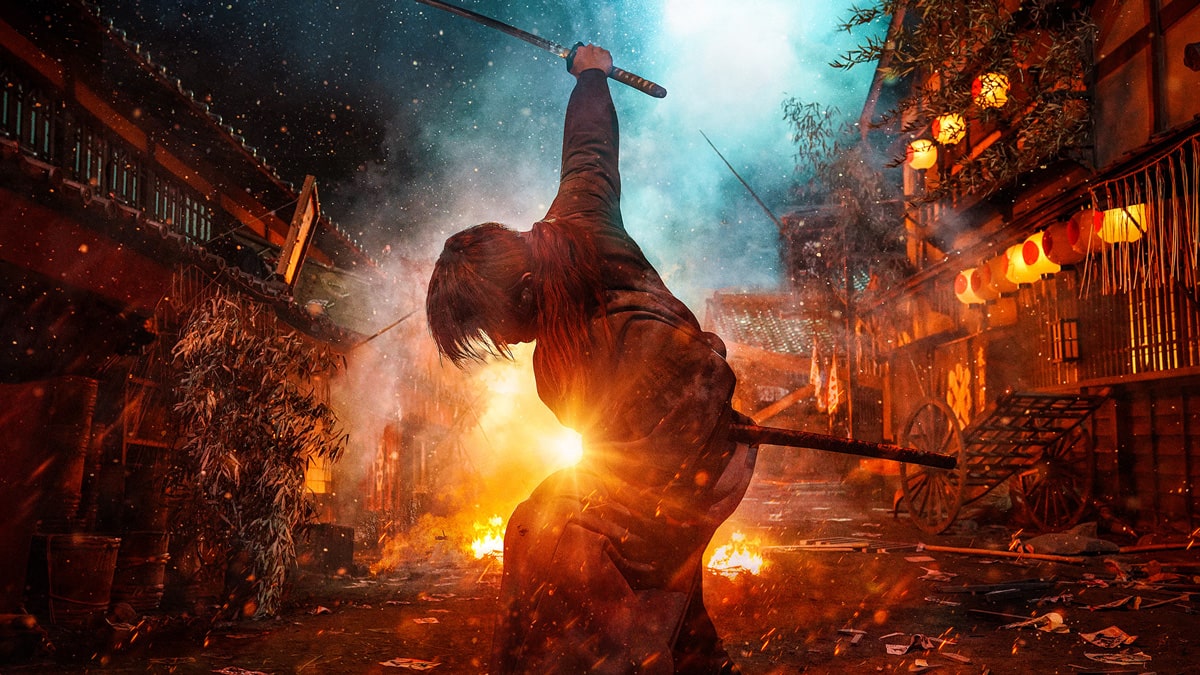
(c) Nobuhiro Watsuki/Shueisha ©2020 Movie “Rurouni Kenshin: Final Chapter Part I - The Final/The Beginning” Production Committee
``Rurouni Kenshin'' A hugely popular series that revolutionized live-action manga with its amazing action!
“Hyakunin Kiri” is a condensed version of “Ruroken” style action.
As you can see, the live-action Rurouni Kenshin series is a meticulously calculated form of entertainment, but it is no exaggeration to say that the action is what makes it the greatest attraction of this series. In this article, we will look at the action scenes, using the second film, Rurouni Kenshin: Kyoto Inferno, the third film, Rurouni Kenshin: The Legend Rurouni Kenshin: Final Chapter Part I - The Final, and the fifth film, Rurouni Kenshin: The Final Chapter - The Beginning, as examples.
First, the outline of these two films is that the popular character from the original work, Shishio The Truth(Tatsuya Fujiwara), makes a long-awaited appearance. Shishio was an assassin who succeeded Battousai as his successor, but was silenced by his employer, the Meiji government, who feared he would leak information, and he ended up suffering severe burns all over his body. He stands up to make amends for the Meiji government, which was established by traitors, and sets out to "conquer the country," proclaiming that "after all, this world is the survival of the fittest. If you're strong, you live, if you're weak, you die."
Fujiwara's presence is astounding as he plays Shishio with overwhelming vocal pressure, despite his distorted visuals with his entire body wrapped in bandages. Popular actors such as Ryunosuke Kamiki, who played Sojiro Seta, a subordinate of Shishio who has a natural talent for swordsmanship, and Yusuke Iseya, who played the role of Aoshi Shinomori, the leader of the Oniwa Banshu clan who are aiming for Kenshin's life, are featured in the manga. It's also nice to see him participating in such a transformation that he looks like he's just stepped out of the room.
The first ``Rurouni Kenshin'' movie was excellent in its charm in the first few minutes, but ``Rurouni Kenshin: Kyoto Inferno Arc'' also leaves the audience stunned with its expanded scale compared to its predecessor. It depicts Shishio declaring war amidst a blazing pillar of fire, clearly showing that the budget and intensity of the work, as well as the action and spectacle, have greatly increased in power. This methodology of ``capturing the audience with the first impression'' is exquisitely sophisticated, and could be called one of the weapons of Otomo's style of entertainment.
In the fourth film, "Rurouni Kenshin: Final Chapter Part I - The Final," Yukishiro Enishi (Arata Mackenyu), whose sister Yukishiro Tomoe (Arimura Kasumi) was killed by Kenshin in "Rurouni Kenshin: The Beginning," goes on a fierce slashing rampage inside a locomotive. In "Rurouni Kenshin: The Beginning," Battousai pretends to be captured and infiltrates the enemy's hideout, where he annihilates the samurai there.
``Rurouni Kenshin: Kyoto Inferno'' is characterized by a dark development that continues from the first half, with the comical scenes that could be seen in the first film being subdued. In a mountain village controlled by Shishio's faction, the corpses of the villagers are hung as an example, and the children go crazy. Driven by anger, Kenshin kills off the enemy army that was present at the scene with a 100-man slash.
This battle scene is extremely worth watching, as it combines Sato's graceful movements and outpouring of passion.It is smooth, like a kind of sword dance, but when the reverse blade sword hits, it is very worth watching. "Pain" is also engraved in detail. It may look flashy, but it really lets you feel the movement of the real body.
The true value of the “Ruroken” series is “expression of pain”

